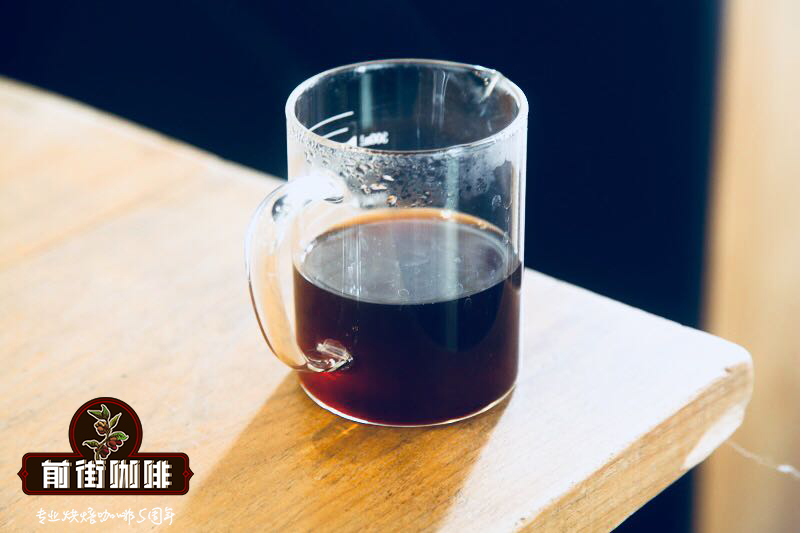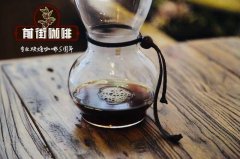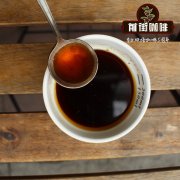Coffee varieties-what are the varieties of Kaddura Coffee and its taste

Professional coffee knowledge exchange More coffee bean information Please pay attention to coffee workshop (Weixin Official Accounts cafe_style)
Cardura is a single-gene variant of Bourbon, discovered in Brazil in 1937, with better productivity and disease resistance than Bourbon, and shorter trees for easy harvesting, but with the same problem of productivity fluctuations every two years as Bourbon. However, its flavor is comparable to or slightly worse than bourbon beans, and more importantly, its adaptability is super strong, it does not need shade trees, and it can also be vibrant under direct sunlight. It is commonly known as Sun Coffee, which can adapt to high density cultivation, but it must be more fertilized and increase the cost. Therefore, the acceptance of coffee farmers in the early stage is not high.
But prices rose sharply in the 1970s, and farmers switched to kadura to increase yields, with fruitful results from aggressive promotion by the Brazilian and Colombia authorities. Farmers 'acceptance of Kadura meant a major change in planting technology. Brazil and Colombia switched to high-yield, high-density solarization cultivation, and by 1990, 14 million bags of coffee beans could be harvested on one million hectares, increasing production by 60%. No wonder high-yield, high-quality cadura has become the most important variety in producing countries.
Kadura is suitable for planting in high altitude areas from 700 meters to 1700 meters. It has strong altitude adaptability, but the higher the altitude, the better the flavor and the lower the production capacity. This is the fate of fine beans. Some scholars call Kadura a dense and exposed version of Bourbon, which is to the point. There is also a variant of yellow catura (Caturra Amarello) in Central and South America, but it is not as popular as yellow bourbon.
Kadura in light roasting, acid aroma is obvious, the overall bright, properly handled, sweetness can be very good, but the coffee alcohol is relatively low compared to bourbon, taste a little lack of cleanliness.
Kadura is usually a red berry, but there are rare areas where yellow kadura is grown, such as Hawaii, where yellow kadura is rarely grown.
Important Notice :
前街咖啡 FrontStreet Coffee has moved to new addredd:
FrontStreet Coffee Address: 315,Donghua East Road,GuangZhou
Tel:020 38364473
- Prev

Where did the coffee beans come from? How is coffee made?
Professional coffee knowledge exchange more information about coffee beans Please follow the coffee workshop (Wechat official account cafe_style) Coffee beans are the fruit seeds of Rubiaceae coffee trees. Because the fruit looks like a red cherry, it is often called COFFEE CHERRY. After the peel, pulp, endocarp, silver skin and other parts of the fruit are removed, the raw coffee beans can be obtained and the process can be started.
- Next

Caramel latte taste description Caramel flavor milk coffee Italian concentrated blend coffee beans recommended
Professional coffee knowledge exchange More coffee bean information Please pay attention to coffee workshop (Weixin Official Accounts cafe_style) I believe that now go to various coffee chain stores will sell caramel latte coffee, you should also have a lot of people drink, but when you go to buy, I don't know if the clerk has taught you how to drink it. A cup of caramel latte is about 20 yuan more expensive than a cup of latte, but I haven't taught you the correct way to drink it.
Related
- Beginners will see the "Coffee pull flower" guide!
- What is the difference between ice blog purified milk and ordinary milk coffee?
- Why is the Philippines the largest producer of crops in Liberia?
- For coffee extraction, should the fine powder be retained?
- How does extracted espresso fill pressed powder? How much strength does it take to press the powder?
- How to make jasmine cold extract coffee? Is the jasmine + latte good?
- Will this little toy really make the coffee taste better? How does Lily Drip affect coffee extraction?
- Will the action of slapping the filter cup also affect coffee extraction?
- What's the difference between powder-to-water ratio and powder-to-liquid ratio?
- What is the Ethiopian local species? What does it have to do with Heirloom native species?

